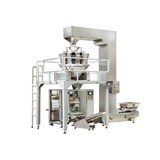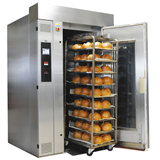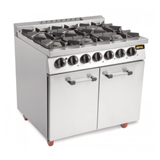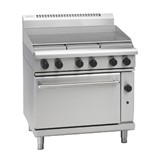Commercial convection ovens utilize circulating hot air to achieve remarkably fast, even, and consistent cooking results.
However, effectively harnessing their capabilities requires understanding proper cooking principles and practices tailored for convection’s unique heating properties. This article will provide food service professionals with a comprehensive guide to mastering commercial convection ovens.
We’ll cover convection cooking fundamentals, adapting recipes, achieving uniform results, recommended time and temperature guidelines, tips for different food types, preserving quality and texture, and techniques to harness the full potential of these indispensable high-speed ovens. Whether baking, roasting, broiling, or otherwise, these convection cooking insights allow chefs to maximize quality and productivity.
Understanding Convection Cooking Principles
Unlike standard ovens relying solely on fixed heating elements for radiant heat transfer, convection ovens utilize powerful internal fans to circulate hot air throughout the cavity during cooking. This fundamental difference in how heat reaches the food impacts the techniques required for optimal convection cooking.
With insight into how convection’s forced airflow enhances heat transfer, chefs can better utilize the speed, efficiency, and consistency these ovens provide.
Convection ovens utilize internal fans to circulate hot air throughout the cavity during cooking. These contrasts standard ovens relying solely on radiant heat from fixed elements. Convection’s accelerated airflow provides these advantages:
- Rapid, even heating as hot air envelops all food surfaces simultaneously.
- Up to 30% faster cooking thanks to constant heat transfer from circulating air.
- Enhanced browning and crisping as airflow removes surface moisture.
- Consistent results as no cold or hot spots exist throughout the oven cavity.
- Ideal for large batch and multi-item cooking with thorough heat penetration.
Due to these differences, convection ovens cannot be used identically to conventional ovens. Understanding convection’s accelerated heat transfer principles is key to adapting techniques for optimal results. Reduce standard oven times and temperatures to prevent overcooking. Position pans to allow maximum airflow access. Convection ovens are truly game-changers when their distinctive heating properties are utilized effectively.
Adjusting Recipes for Convection Ovens
Because convection ovens deliver heat faster and more forcefully with constantly blowing air, traditional recipes need adjustment to account for the accelerated cooking rates.
Without modification, convection’s rapid transfer of heat into foods can quickly lead to overcooking and drying. Learning how to scale back levels appropriately prevents overcooking while still capitalizing on the big productivity boost these ovens provide.
Let us cover best practices for reducing temperatures, shortening cook times, and making other adaptations when converting conventional recipes for ideal results in convection ovens.
- Reduce oven temperature 25-50°F lower than the recipe states. Monitor cooking progress.
- Shorten cook times up to 25% less than conventional ovens.
- Check food frequently as convection’s speed can quickly overcook items if not monitored.
- Add a minute or two back to the cook time for thicker, dense foods needing a bit longer to heat through.
- Be prepared to make further tweaks as you learn your particular oven’s capabilities relative to different foods.
With precise temperature control and timer settings, convection ovens excel at consistency once the optimal convection adaptations are determined. Document modified times and temperatures once the ideal bake, roast or reheat results are achieved.
Best Practices for Even Cooking and Baking
Achieving uniformly consistent results batch after batch relies on using proper practices tailored specifically to take advantage of convection’s airflow properties. Understand the recommendations for positioning pans, managing oven racks, rotating items during cooking, monitoring doneness, and making other process adjustments. With the right techniques, convection ovens can deliver remarkable precision results across the board. We’ll explore the small but important changes that make all the difference in expert convection utilization.
Achieving uniform results relies on using proper practices:
- Allow at least 2” clearance around pans for airflow access on all sides. Avoid overcrowding.
- Stagger pans on racks rather than directly above one another for more exposure.
- Rotate pans 180° midway through cooking cycle to equalize heating.
- Open oven door briefly to allow some steam to escape from breads and pastries when needed.
- Use flat sheet pans rather than edged pans which can obstruct airflow.
- Add a minute or two to the bake times of items on bottom racks which see less airflow.
- Monitor first batch closely to identify any necessary oven location or time adjustments.
Experience will dictate nuanced refinements for your particular oven, but these guidelines create an excellent starting point for honing convection excellence.
Time and Temperature Guidelines
Fine-tuning the optimal temperature and cook time settings for convection ovens requires testing, observation, and refinement. Time and temperature guidelines create a starting point for personalization based on your specific oven and menu items.
You need to know how much to reduce conventional recipe cook times and temperatures as an initial benchmark when adapting standard recipes for convection excellence.
Follow these guidelines:
- Poultry - 350°F, reduce cook time by 15-25%
- Pork and beef roasts - 325°F, reduce cook time about 25%
- Casseroles - 375°F, reduce cook time 15-20%
- Cooked vegetables - 375°F, reduce time 10-15%
- Fresh vegetables -425°F, roast 5-10 minutes less
- Breads - reduce standard temperature by 25°F
- Cookies - set oven 25°F lower
Monitor doneness early and incrementally add time if needed. Convection’s rapid speeds makes small time adjustments key. Record results to refine guidelines specific to your oven.
Utilizing Convection for Different Food Types
Convection cooking excels across a diverse range of applications, from baking and roasting to broiling, frying, and more. Understand the specifics of how convection’s accelerated hot airflow can optimize results for different types of menu items and cooking methods.
Whether baking bread, crisping fried foods, roasting meats, or steaming vegetables, convection provides advantages tailored to each food’s needs. Understanding the broad capabilities of convection empowers chefs to utilize these ovens for virtually any cooking need.
Here are some example convection shines for diverse applications:
- Baking - circulating air creates superior rise in doughs and batters. Reduced temperature prevents over-browning exteriors before food is cooked through.
- Roasting - hot air seals, caramelizes, and evenly browns exterior while locking in juices internally. Meat roasts 50% faster.
- Broiling - convection replicates intense broiler heat for meats, seafood and poultry needing quick searing.
- Fried foods - high velocity hot air perfectly crisps fried items without submerging in oil. Greatly reduces fat content.
- Reheating - convection gently brings prepared foods up to temperature without drying them out.
- Smoking – the addition of convection enhances penetration of smoke flavors into meats, vegetables, and more.
Maximize productivity and quality results by using convection for nearly all cooking, reheating, and smoking needs. The flexibility enables endless menu possibilities.
Tips for Preserving Food Quality and Texture
While convection ovens provide remarkably faster cooking, special care must be taken to preserve optimal food quality and texture. The intense airflow can quickly dry out foods and overcook them if proper precautions aren’t implemented. Thankfully, with close monitoring and a few simple adaptations, convection can produce succulent roasted meats, tender vegetables, and delicately moist baked goods consistently.
- For lean meats like poultry and pork, brushing or rubbing the exterior with oil helps prevent excessive moisture loss in the dry heat and airflow. The oil creates a protective barrier to retain natural juices and prevent meat from drying out. You can also place a shallow pan filled with water on the lowest oven rack to add a touch of humidity to the cooking environment. For bone-in chicken parts, wrap foil around wing tips and ends which tend to overcook.
- Use an instant-read thermometer to monitor the internal temperature of roasts and other meats rather than rely solely on cook times. This prevents overshooting targeted finished temperatures. Remove most proteins from the oven when they are 5-10 degrees below the desired final internal temp, then allow carryover cooking to bring them to perfection without drying.
- With baked goods like cakes, muffins, and breads, convection’s accelerated heat can quickly over-brown exterior surfaces before the interior is fully cooked. Dropping the temperature 25-50°F compensates for the increased hot air velocity. You can also tent aluminum foil over items or bake directly on parchment paper to create a barrier against over-browning. For breads, open the oven briefly at intervals to allow some steam to escape and prevent a hardened crust forming prematurely.
- Check baked good bottoms early and rotate pans if browning unevenly. Add a minute or two to the bake times of items on the very bottom racks which receive less direct airflow. Staggering pans provides more exposure. After removing items from the oven, allow baked goods to cool for 5-10 minutes before handling to finish setting up their structure.
With practice and observation, the ideal modifications will become second nature. While requiring some initial adjustments, convection ovens can produce phenomenally moist, tender results across the board. The combination of lowered temperatures, reduced cook times, close monitoring, and small protective measures allows convection to deliver both speed and peak quality.
Here are some practical tips for preserving food quality and texture:
- Brushing lean meats and poultry with oil to prevent excessive moisture loss
- Using a meat thermometer to monitor doneness and avoid overcooking
- Wrapping poultry legs and wing tips with foil to prevent them overcooking
- Checking breads early and covering if browning too quickly
- Removing some steam by briefly opening the oven door during baking
- Allowing casseroles and lasagnas to rest 5-10 minutes after cooking to set up
With close monitoring and these simple modifications, convection ovens seal in flavor and provide tender, moist results every time.
Mastering the nuanced cooking techniques required to fully leverage the capabilities of commercial convection ovens is an invaluable skillset for professional chefs. The goal of this guide was to provide comprehensive yet accessible advice on the best practices for harnessing convection’s speed and precision. While an initial learning curve exists when transitioning from standard ovens, convection expertise pays tremendous dividends in kitchen productivity, consistency, and quality.
We covered the critical need to understand convection’s accelerated heat transfer principles and adapt traditional recipes accordingly. Dropping temperatures and shortening cook times compensates for hotter and faster airflow. We explored optimal rack positions, pan placements, rotation, and monitoring methods for achieving uniform results across batches. Recommendations were provided to give cooks a starting point when tailoring generic recipes to their specific oven’s capabilities. The versatility of convection for diverse cooking methods makes these ovens centerpieces of any commercial kitchen’s firepower. Lastly, tips were shared for retaining moisture, preventing overcooking, and maintaining the peak textures that are hallmarks of an expert chef even when cooking at high speeds.



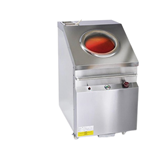
-160x160-state_article-rel-cat.png)

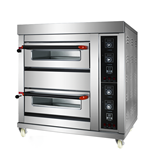



-160x160-state_article-rel-cat.png)
